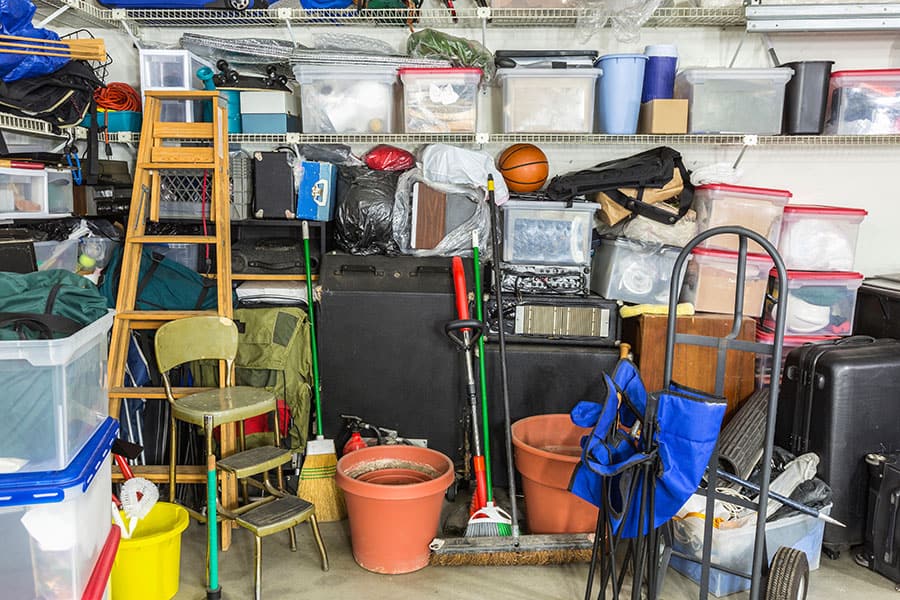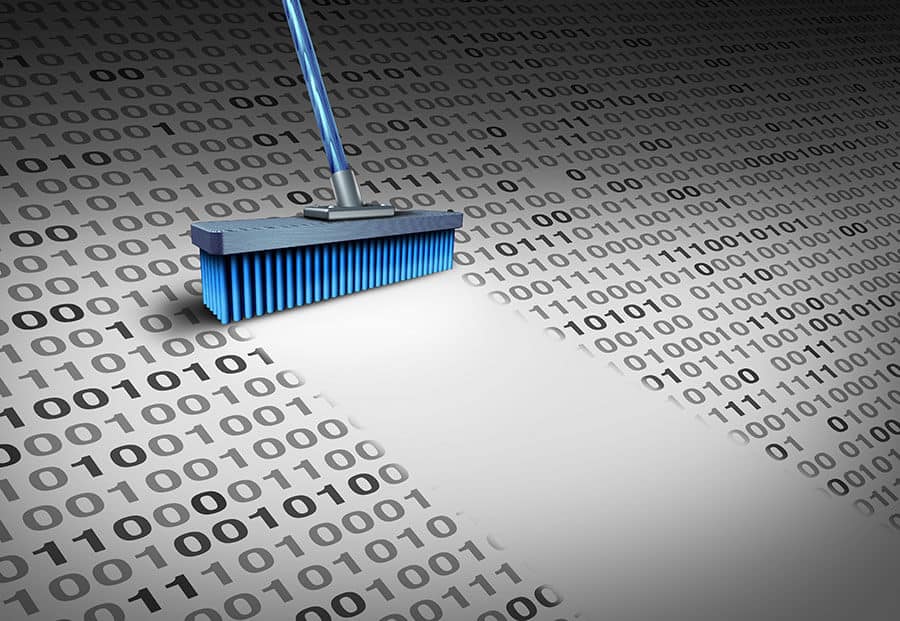Are you surrounded by data but have no idea how to manage it and keep it in order? The KonMari method, which in this article is applied to the challenge of data storage, is a perfect solution for creating a system of organizing and maintaining the stored data on your personal computer, which will influence your productivity and the quality of your work with data.
We collect data, but what is coming after?
From the behavioral point of view, human beings always tend to collect things. This happens due to the uncertainty of life, which people try to compensate for with a lot of possessions. This way, we create a comfort zone with the things that are familiar to us, reducing the fear of uncertainty.
The bad side of this habit, however, is the fact that usually, the things we store might not only be irrelevant, but even useless. Consequently, a rigorous clean-up is what people need from time to time.

One of the latest techniques for organizing and storing our belongings was introduced by Marie Kondo, a Japanese organising consultant and the author of the book “The Life-Changing Magic of Tidying Up.” Her concept is particularly oriented to material things like clothes, household essentials, accessories, etc. However, her ideas can easily be applied to organising other aspects of modern life, for instance, data storage.
Data storage: Follow KonMari instructions
Nowadays, people are exposed to a greater amount of data than ever before, the quantity of which increases quickly. The biggest challenge, therefore, apart from the analysis and evaluation of data, is storage. Once it becomes unorganized, any type of data can cause clutter and chaos, which might lead to uncertainty, disinformation, or even demotivation.
Surprisingly, an analogy between the principles of the KonMari method and the techniques of data storage can be drawn. This exact strategy will be discussed in this article, with examples as to how you can store data effectively on your personal computer. These seemingly common techniques can significantly ease your work with data and its storage.
The essential point that should be understood is the proposition that the whole process of your work with data is divided into three main steps, namely: de-cluttering, organising and, last but not least, maintaining.
The Starting point: de-cluttering
The first stage and probably the most complex one, as stated above, is de-cluttering the data that is stored on your computer. This action is basically oriented to the clearing away of the whole mass of information that is no longer relevant, or has become useless, or is simply old.
This might include materials that you used once and never had time to clear, or numerous copies of your resume, first drafts, duplicates, etc. All of these should be removed in order to free up space and put things in order.
It is, however, crucial to remember that de-cluttering should be done separately, and not done simultaneously with organising. The core idea of the first stage is to get rid of all the unnecessary data and only then to start organising.
Are you enjoying the process?
The key advice from Kondo at this stage is to be conscious about the way you make decisions on whether to remove things or keep them. It is recommended, instead of the minimalist approach, when everything that is unpractical and seemingly useless is removed, to focus on what you actually want to keep rather than what you want to get rid of. This is crucial, because instead of having negative emotions attached to the whole process of de-cluttering, it will become a positive process that generates positive feelings.
Have the right focus
The next aspect, worth focusing on, is your approach to the work. According to Kondo, the removal of unnecessary items should be done not according to locations but according to categories. Transferring this advice to the data storage case, this might mean that instead of deciding to clear all the files in the desktop, you might more productively focus, for instance, on the study-related materials first.
Categorizing things helps to keep focused and process-oriented, especially if this takes a lot of time. For further convenience, you can also divide the categories into groups based on year, so it would be even more efficient going from the oldest data to the newest ones.
Based on peoples’ psychology and the fact that we usually have a quite strong attachment to certain objects, Marie Kondo emphasizes the importance of creating a plan or an order in which the information will be cleared, namely, starting with unsentimental items, and then progressing to the sentimental ones.
Hence, the first files that would go would be the ones with minimal meaning, such as copies, drafts, irrelevant notes, etc. Since we have no emotional attachment to such items, this should be quite easy to accomplish.
Progressing though study-related materials, books, articles, reports, and more valuable data, we approach the last category, which is items of sentimental importance. For instance, most people have a quite strong emotional attachment to photographs.
Since photos may evoke feelings or remind you about a certain event, situation or person, it is usually harder to decide whether to keep one or to delete. That is why the like items should be processed at the very end. This way you allow yourself to start off easy, getting adjusted to the process as you move toward the hardest part.
Be careful!

It is worth mentioning at this point that, due to fact that each person’s belongings have a bit of meaning and importance, at least to that person, under no circumstances should you ever de-clutter somebody else’s data, unless you want to risk massive conflict. This is quite straightforward and logical, since what has a priceless value for one, might be completely irrelevant for another.
Similarly, for the same reason, it is not recommended to go through the clearing process together with other people, especially family members, loved ones or close friends, since this might put the precision of your personal decisions into jeopardy by being influenced to either keep certain information that is needless or, on the other hand, to get rid of something that is pretty valuable for you.
Keep on with organizing

Once the de-cluttering stage is over, it is time to start thinking about how to organize the sorted data on your computer. Here, you might get creative with your own preferences and patterns; however, Marie Kondo offers a set of rules that should be followed for an effective organizing process.
Home, sweet home
First of all, every item or, in our case, every piece of data should have a home. On your personal computer, the easiest way to do this is to create folders. And to make sure that each category of information is located near the others that are relevant or within the same space. In other words, the location of the data should be logical, easy to access, and easy to find. For a practical reason, try to locate the most frequently used data in a more accessible place.
For instance, on your Desktop. On the contrary, if some data should be stored but not used frequently, locate it out of your immediate field of vision. This way, it won’t distract you on a daily basis. For this purpose, the numerous backup and archive storage media like cartridges, removable disks, or clouds can be helpful.
Contrary to the previously mentioned backup opportunities, it is vital to keep all the data more-or-less visible at any time, otherwise you might keep gathering data you already have, overloading your computer and continuously adding information waste. Therefore, balance plays an important role in organizing your data.
Almost there: maintaining
The last stage of the process is arguably the most significant one – maintaining the tidiness of the stored data after the completed de-cluttering and organizing process. The reason why it is so important to keep the data in order is simply the fact that it saves your energy and time.
Otherwise, the de-cluttering and organizing stage would have to start all over again. The simplest and yet most effective advice in maintaining the information on a computer in order, is to create the habit of placing new data in the appropriate place as soon as you get it.
Therefore, instead of gathering hundreds of files, repeatedly downloading and copying them and, as a result, creating a mess, organize data by category right away and use folders you created previously. This way, you will avoid storing data in an inappropriate way, as well as removing the need to do de-cluttering repeatedly.
As Marie Kondo states, put things away as you use them. In our case, we may interpret this as advice to get rid of the data that have been used and, for certain reasons, are no longer needed. Do not store them for later or just in case, as those are the neglectable pieces of information.
At the end of every day, give thought to the most convenient places for cluttering, like downloads and bin to ensure there are no useless data left. Most importantly, treat your working space and storage with respect and make sure the stored data are worth your respect.
Like any other part of the activities and spheres of our lives, data storage can also be unregulated and messy or, on the contrary, organized and tidy. The choice, however, can have a great influence on any individual’s lifestyle, general satisfaction, and productivity. So, what is your choice?
If you want to know how to keep personal data safe, read it here.
You can also check Firmex – an excellent virtual data room provider
Photos: Shutterstock / Photomontage: Martina Advaney
Support us!
All your donations will be used to pay the magazine’s journalists and to support the ongoing costs of maintaining the site.
Share this post
Interested in co-operating with us?
We are open to co-operation from writers and businesses alike. You can reach us on our email at [email protected]/[email protected] and we will get back to you as quick as we can.









